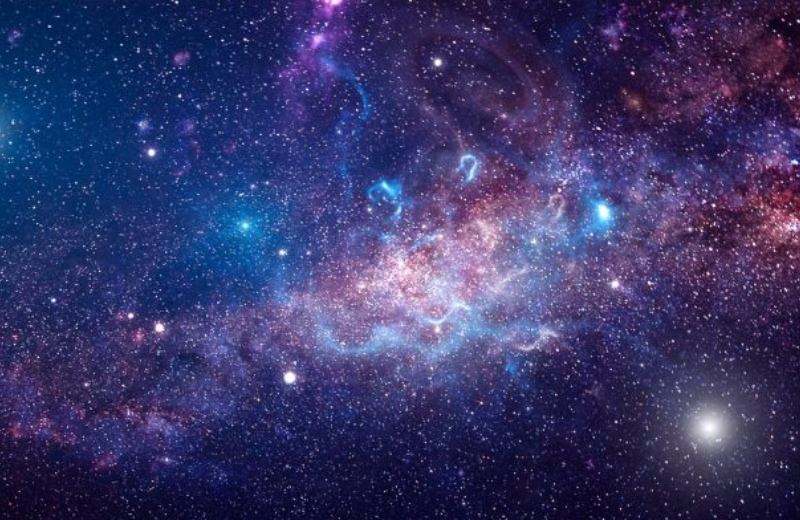Among the many constellations that paint the night sky, the Ara constellation holds a unique position. In this guide, we'll explore what makes Ara special, its place in ancient myths, and how you can spot it in the sky.
Jump to:
Recommended for you!
Best SellersWhat is the Ara Constellation?
The Ara constellation, often referred to as Ara the Altar, is a small but notable constellation located in the southern hemisphere. Its name comes from the Latin word "Ara," which means "altar." This constellation has been recognised since ancient times and is associated with a sacred altar, symbolising sacrifice and devotion.
Ara is one of the 48 constellations listed by the Greek astronomer Ptolemy in the 2nd century, and it remains one of the 88 modern constellations recognised by the International Astronomical Union. Although it is not as widely known as some of the more prominent constellations, Ara has its own unique charm and significance.
What Does Ara Look Like?

If you're looking to spot Ara in the night sky, it might not be immediately obvious. Ara is a relatively small constellation and doesn’t contain any particularly bright stars. However, it has a distinct shape that resembles a rectangle or trapezoid, which represents the outline of an altar.
Ara is located near the constellation Scorpius, which is much easier to identify due to its bright star, Antares. By finding Scorpius first, you can then trace your way to Ara. The stars of Ara form a pattern that, while subtle, is recognisable once you know what to look for.
The Ara Constellation Myth
The Ara constellation is steeped in ancient Greek mythology, where it is associated with the altar used by the gods. According to the myth, Ara represents the altar where the Olympian gods, led by Zeus, made sacrifices before their battle against the Titans. This sacred altar played a role in the gods' victory and was placed in the sky by Zeus as a reminder of their triumph.
Who Does the Ara Constellation Represent?
In mythology, Ara represents more than just an altar—it symbolises a place of divine sacrifice and victory. The gods' use of the altar before the Titanomachy, the great war between the Olympians and the Titans, imbues Ara with a sense of reverence and power. The constellation serves as a celestial reminder of the gods' strength and their commitment to justice and order in the cosmos.
What is the Meaning of the Ara Constellation?

The meaning of the Ara constellation extends beyond its mythological associations. Symbolically, Ara represents the concept of sacrifice, both in a literal and metaphorical sense. The altar is a place where offerings are made, symbolising dedication, reverence, and a connection to the divine.
In astronomy, Ara is a constellation that connects us to ancient stories and beliefs, reminding us of the deep cultural significance that the stars have held throughout human history. It serves as a reminder of the sacrifices made by those who came before us, both mortal and divine.
What is the Spiritual Meaning of Ara?
From a spiritual perspective, Ara can be seen as a symbol of commitment and dedication. Just as an altar is a place for offerings, Ara represents the idea of giving something of value in pursuit of a higher purpose. This could be interpreted as a call to consider what we are willing to sacrifice or dedicate ourselves to in our own lives. Ara encourages us to reflect on our values and the causes we hold dear.
How to Pronounce Ara
The word "Ara" is pronounced as "AY-ruh," with an emphasis on the first syllable. It’s a simple and elegant name that reflects the constellation’s significance and its connection to ancient myths.
Ara's Stars
Although Ara doesn’t contain any exceptionally bright stars, it does have several notable ones:
- Beta Arae: This is the brightest star in the Ara constellation, with a magnitude of about 2.85. Beta Arae is a yellow supergiant star, making it an essential reference point for identifying Ara in the night sky.
- Alpha Arae: Another significant star in the Ara constellation, Alpha Arae is a blue-white star. It’s a fast-spinning star that emits a significant amount of ultraviolet light.
- Gamma Arae: This is another blue-white star that contributes to the overall shape of the constellation. Gamma Arae is a massive star, much larger than our Sun, and it adds to the distinctiveness of Ara’s outline.
Nebulae in the Ara Constellation

In addition to its stars, Ara is home to several fascinating nebulae and deep-sky objects. One of the most interesting is the Ara Cluster (NGC 6193), an open cluster that contains some of the youngest stars in our galaxy. This cluster is part of a larger region of star formation, making it a point of interest for astronomers studying the birth of stars.
Another notable nebula in Ara is the NGC 6188 nebula, a bright emission nebula located near the Ara Cluster. This nebula is known for its complex structures and active star-forming regions, providing a stunning view through telescopes.
Finding Ara in the Sky
Finding Ara in the night sky can be a rewarding experience, especially if you’re in the southern hemisphere where it’s more easily visible. Ara is located in the fourth quadrant of the southern hemisphere (SQ4), lying between latitudes +25° and -90°. This means it’s best viewed from southern latitudes during the winter months, although it can also be observed from lower northern latitudes at certain times of the year.
To locate Ara, start by finding the Scorpius constellation, which is one of the most recognisable constellations in the southern sky. Scorpius is home to the bright star Antares, which can serve as a guidepost. Once you’ve found Scorpius, look towards the southern sky to find Ara, which will be slightly lower and to the right of Scorpius.
Using a star chart or an app can help you identify the exact location of Ara and its stars, making it easier to pinpoint this constellation in the night sky.
Recommended for you!
Best SellersFun Facts About Ara
Ara may not be as famous as some other constellations, but it has a rich history and some intriguing features. Here are a few fun facts about the Ara constellation:
- Cultural Significance: In ancient times, Ara was associated with various altars and sacrificial sites across different cultures, highlighting the importance of such places in religious and ceremonial practices.
- Position in the Milky Way: Ara is located in a dense part of the Milky Way, making it rich in stars, clusters, and nebulae. This makes it an exciting area for astronomers to study.
- Visibility: Ara is best observed from the southern hemisphere during the winter months. From the northern hemisphere, it’s more challenging to spot due to its low position on the horizon, but it can still be seen with the right conditions.
- Star Formation: The Ara Cluster and surrounding nebulae are active regions of star formation, providing a glimpse into the processes that create new stars.
Study Astronomy for £29
If you're eager to delve deeper into astrology and uncover more about the stars' influence on your life, consider enrolling in the Astrology Diploma Course with Centre of Excellence. For a limited time, you can get this comprehensive course for a discounted price of £29.













